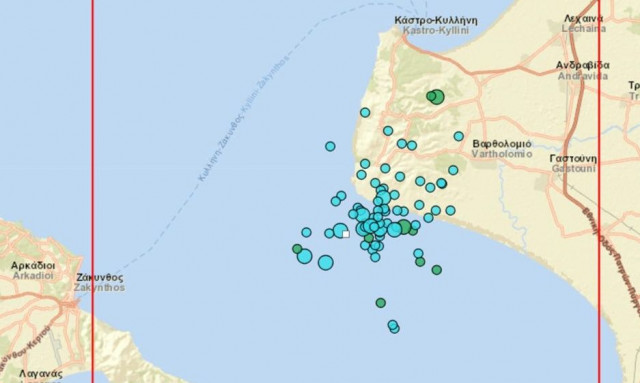Amphipolis: Scenarios for the occupant of the tomb and the secret of lion
Many scenarios for the secret which is hidden in the tomb of Amphipolis, while archaeologists and experts express their theories about the gender of the deceased In an extensive article in National Geographic about the excavations at Amphipolis, with the title: “Queen of the Underworld Sheds New Light on GreekTomb”, it is stressing that the mosaic with the abduction of Persephone "may hold the key to unlocking mystery: Who was buried in the massive mound?”

“Greek archaeologists have discovered the image of a young, red-haired goddess being swept off to the underworld inside a 2,300-year-old tomb near the ancient site of Amphipolis in northern Greece. Identified as Persephone, daughter of Zeus, the goddess portrayed on a mosaic floor provides a key new clue to what in recent months has become a much publicized mystery”, says National Geographic and continues.
“Monumental in scale and Macedonian in style, the Amphipolis tomb (also known as the Kasta tumulus) lies close to the Aegean port that Alexander the Great used for his fleet. Archaeologists have dated the tomb to the last quarter of the fourth century B.C., likely placing its construction in the fractious period following Alexander's death in 323 B.C. All this has fueled intense speculation that the tomb was built for someone close to Alexander, but clear evidence has been lacking”.
The National Geographic hosts the statements of Ian Worthington, a classical scholar at the University of Missouri in Columbia, who thinks the excavators could be looking at "a female occupant of the tomb, because the mosaic shows a female being led to the underworld." “If this proves to be the case”, Worthington added, “the tomb might hold the remains of Roxane, Alexander the Great's wife, or Olympias, his mother”.
The article ends with the remark that “only time, and further excavation, will tell”.
This view contrasts with what has supported the Professor of Classical Archaeology, Georgia Alevras, who considers that it is not the mosaic that indicates the gender of the deceased, but the lion. As stated in MEGA, if the lion was actually on top of the mound in Kasta, then it means that is men's monument. "Because lions, in the 6th century BC, were placed in graves of men who died in the war," she said.
Theodore Mavrogiannis, associate professor of history and archeology at the University of Cyprus, he said in MEGA that he is sure that it is a monument of the last quarter of the 4th century BC and that is the tomb of Hephaestion, as he said, which was the only one who could be buried with such honor, as probably was the mandate given by the Macedonian king.
Mr. Mavrogiannis invokes the Caryatids and the origin of Hephaestion was Athenian, like many residents of Amphipolis (Amphipolis was founded by the Athenians in 437 BC to control the mines of Thrace). At the same time, he stressed that there is no evidence that Hephaestion was buried in Babylon.
"He died in November 324 BC in Ecbatana of Media and we have the records by Diodorus Siculus, Arrian and Plutarch about the funeral, which resulted in the burning of the dead body in a particular building, which was called 'Pyra'. Nobody ancient writer says that the tomb of Hephaestion is in Babylon", he said. According to the professor, the tomb that helps in dating the monument refers to the period that Hephaestion was killed.
Despite the scenarios, the whole world is waiting anxiously for the next findings of Mrs. Peristeri and her team, which have made the assessment that the occupant of the tomb, (as said the last days also Mrs. Mendoni), probably has a political relationship with the House of Temenid.


.jpg?t=5_MXds6B2jNeiT2ywuqdag)





















